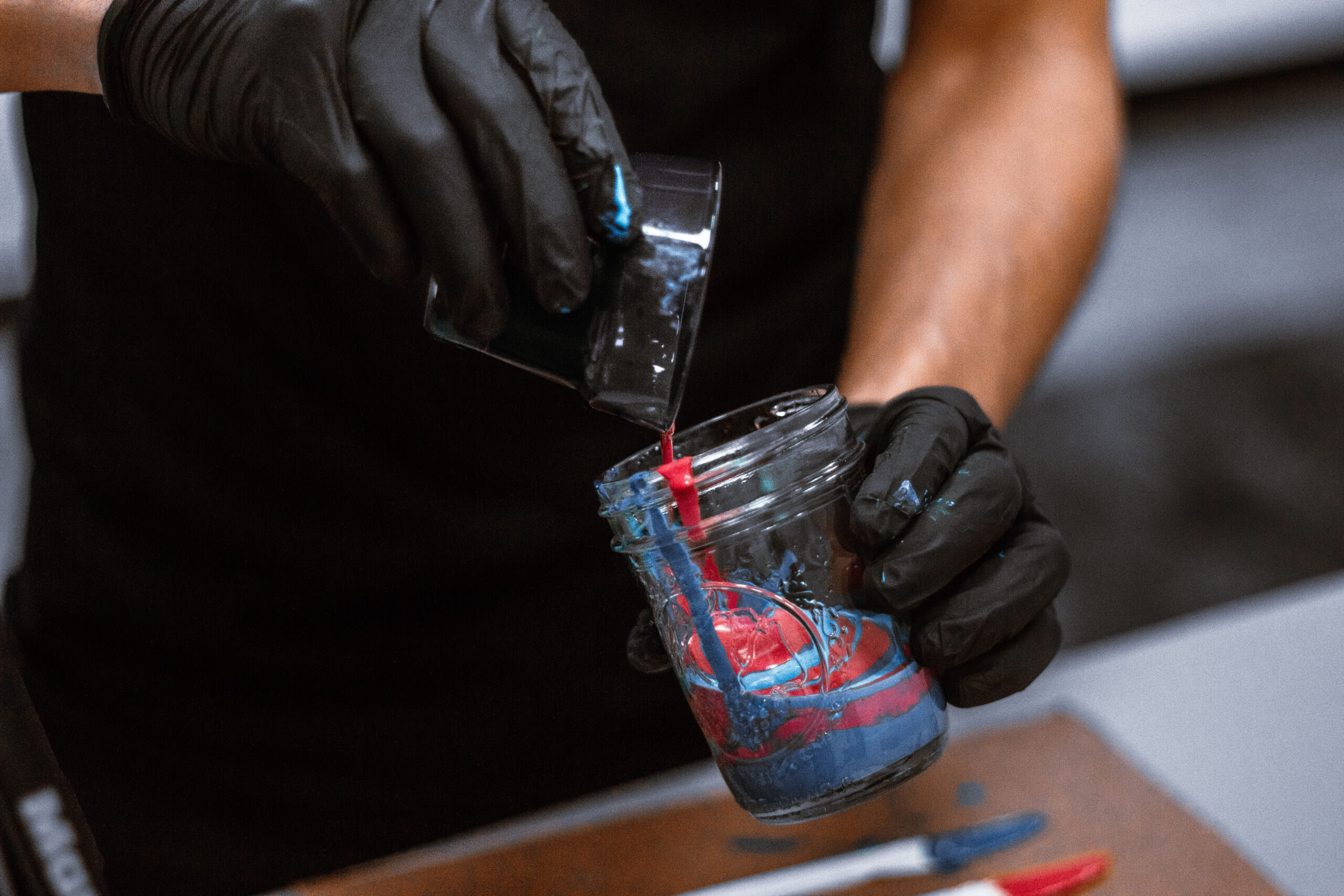 Use this general guide for flow painting to create a vividly colorful abstract piece of art. As you create, feel free to experiment with different techniques and mixtures. To create a long-lasting and archival piece, it is recommended to use a professional quality medium such as Liquitex Professional Flow Aid Effects Medium and Golden GAC800 Pouring Medium.
Use this general guide for flow painting to create a vividly colorful abstract piece of art. As you create, feel free to experiment with different techniques and mixtures. To create a long-lasting and archival piece, it is recommended to use a professional quality medium such as Liquitex Professional Flow Aid Effects Medium and Golden GAC800 Pouring Medium.
Supplies Needed:
- Trash bags or plastic covering
- Canvas or Canvas board
- Large cup or mason jar
- White or clear glue (Elmer’s glue or school glue preferred)
- Water
- Small disposable cups
- Acrylic paints (any quality)
- Dish soap (optional)
Steps to Paint Pouring:
- Set up your workstation by completely covering the area with trash bags or plastic covering. Acrylic pouring can be very messy, so protect your furniture, floor, and clothing. If possible, prop your canvas up on cups or a frame for easier cleaning.
- Mix your flow medium in a large cup or mason jar. To create flow medium, use 50% glue and 50% water. Mix well to eliminate lumps.
- Mix your acrylic blend in small cups. Add 50% paint and 50% flow medium to the small cups. Mix well to eliminate lumps. Optional, mix an additional cup of thin white paint to wet your canvas with before pouring.
- Pour your acrylic paint onto your canvas with your paint cups. Combine, overlap, and drizzle paint until paint begins to flow together. Optional, try tilting your canvas to spread out and blend the paints. Paint will continue to blend and spread until dry.
- Leave your canvas to dry for 24-48 hours. If paint bubbles, pop gently with a toothpick or fork.

